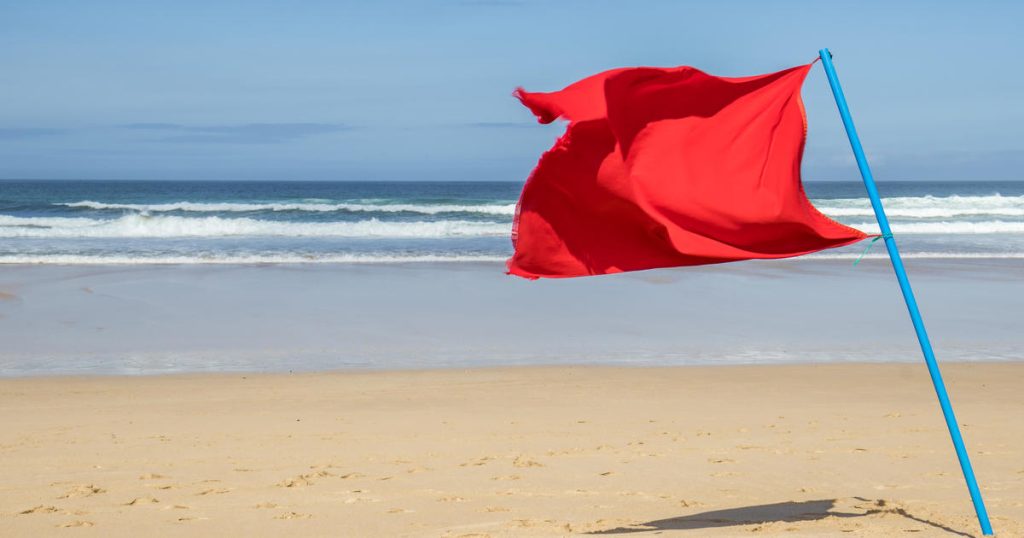Beach flags are a vital tool for informing beachgoers of the conditions they may face in the ocean. These flags are used to communicate potential hazards such as rough surf, strong currents, and marine life presence. The different colors of the flags represent different levels of danger, ranging from green for calm conditions to red for hazardous conditions. The purpose of these flags is to keep beach visitors safe and informed about the risks associated with swimming in the ocean. The international organization U.S. Lifesaving Association has established these flag systems to standardize safety measures across beaches.
Green flags are used to indicate calm or mild conditions at the beach. While this flag was not officially adopted by the International Life Saving Federation due to the potential hazards present in all water, some localities may choose to fly a green flag to denote safe conditions. Yellow flags signal a medium hazard, which may include moderate surf conditions or currents. Beachgoers are advised to exercise caution when this flag is up, especially weak swimmers who should avoid entering the water.
Red flags are a clear warning of rough conditions in the water, such as strong surf and currents. The U.S. Lifesaving Association strongly discourages swimmers from entering the water when a red flag is up. Double red flags indicate that the water is closed to the public, further emphasizing the hazardous conditions. Purple flags are used to warn of marine animals that may cause minor injuries, such as jellyfish and stingrays. These flags do not indicate the presence of sharks, although some locations may use purple to warn of their presence.
Red and yellow flags designate areas that are protected and supervised by lifeguards, indicating a safe zone for swimmers to enjoy. Red and white flags signal an emergency situation that requires immediate evacuation of the water, often due to water contamination or the presence of dangerous marine creatures. Black and white flags are specific to areas designated for surfboards and non-powered watercraft, ensuring the safety of swimmers and surfers. Additionally, orange windsocks are used to communicate unsafe conditions for inflatable objects in the water, such as rafts and swimming rings.
While the U.S. Lifesaving Association has established these flag systems, individual locations may adapt them to suit their specific needs. It is important for beach visitors to familiarize themselves with the flag system in place at their chosen destination and heed any warnings or instructions provided by lifeguards. By paying attention to beach flags and understanding their meanings, visitors can enjoy a day at the beach safely and responsibly, aware of the potential hazards they may encounter in the ocean.


